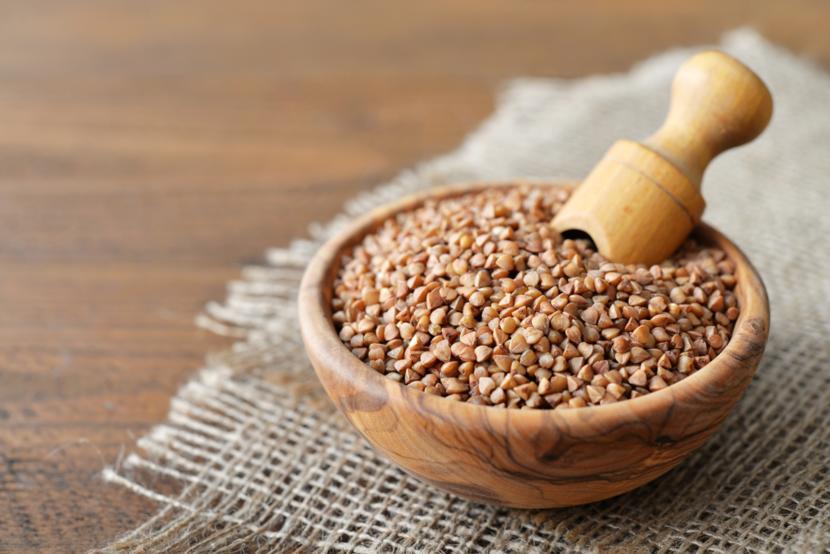The Benefits of Buckwheat

Buckwheat is not actually a wheat. Although it is a whole grain it is neither a grain or a cereal. Similar to quinoa, buckwheat is derived from the seeds of a flowering plant. It is naturally gluten free making it a great ingredient in many dishes and smoothies.
Buckwheat originated in the Balkan area several thousand years ago. It's been making a comeback of sorts because it is a tasty, nutritional and gluten free addition to soups and other grain dishes.
Here are some of the benefits of including buckwheat in your diet.
Improves cardiovascular health
Buckwheat boosts your cardiovascular health since it contains various flavonoids. Essentially, consuming buckwheat can help you reduce high cholesterol levels and prevents bad cholesterol from forming, thereby boosting your cardiovascular health.
Buckwheat is also rich in manganese, enabling efficient blood flow. By regularly consuming buckwheat, you can absorb nutrients more effectively from all food items consumed. Given the impact that it has on the blood flow and the fact that buckwheat is more proactive in regulating cholesterol levels, its regular consumption can contribute to improved cardiovascular health.
Regulates blood sugar levels
Buckwheat contains D-chiro-inositol, which is quite effective in regulating blood sugar levels. This particular compound increases the body’s sensitivity to insulin, thereby resetting abnormal blood sugar levels to normal levels. Buckwheat contains various minerals, vitamins, and proteins along with a high percentage of dietary fiber.
Buckwheat with D-chiro-inositol enables your body to regulate blood sugar levels more efficiently. Various studies have shown how D-chiro-inositol boosts cellular sensitivity to insulin, which may at times act as an insulin-mimetic. It is why most dietitians and doctors recommend consuming buckwheat to diabetics to help regulate blood sugar.
Reduces gallstones
Buckwheat is a rich source of insoluble dietary fiber. Its seed packs more dietary fiber per serving than any other whole grain. This helps speed up digestion, so that less bile is produced in the body. It also inhibits the formation of gallstones, which may occur in the case of delayed digestion. Since buckwheat encourages speedy digestion, the chances of you developing gallstones are reduced.
Results of recent studies show as much as a 15% differential on the risk of developing gallstones. For this reason, you may choose to opt for buckwheat for better digestion, improvement to nutrient absorption rate, and above all, to make sure gallstones are minimized.
Registers high on the nutrient scale
Buckwheat contains more nutrients and proteins than any vegetable or fruit according to a recent research study. It has been shown that buckwheat is highly rich in phytonutrients which help with the prevention of infections. The antioxidants along with phenolics and other phytonutrients work actively to prevent inflammation by strongly inhibiting the growth of bacterial and fungal cells.
Reducing Cancer Risk
Buckwheat is loaded with phytonutrients and some of them happen to be plant ligands. Plant ligands are effective when it comes to inhibiting cancer and prevent it from spreading to other parts of the body.
Helps women in menopausal stages
Buckwheat can help offset menopause symptoms such as higher blood pressure, rapid heartbeat, and overall weakened immune system.
Reduces the risk of heart attack
Since buckwheat is a rich source of dietary fiber along with plant ligands and other compounds, it supports cardiovascular health.
Helps with respiratory disorders
Respiratory disorders such as asthma, can benefit from a diet rich in buckwheat and fish.
Helps build strong and healthy bones
Aside from being rich in antioxidants, buckwheat also contains high amounts of selenium and zinc. These trace minerals are essential for bone growth. Selenium helps strengthen fingernails and teeth.
How to cook buckwheat
Start by rinsing buckwheat with water. Next, simmer a 2:1 ratio of water and buckwheat (2 cups of water for every 1 cup of buckwheat) on the stovetop for approximately 20 minutes. If you notice that the groats appear soft and pulpy, try reducing the water.
Sprouting buckwheat
Another method to improve buckwheat’s absorbability of nutrients is to sprout the groats. Sprouting buckwheat groats can help lessen the enzymes that can cause buckwheat indigestion to some people.
The following are the steps for buckwheat soaking and sprouting:
- For soaking, place dried groats with water in a big bowl ranging from 30 minutes to six hours. After soaking, drain the water and strain the groats. Let them air dry.
- While air drying, add 1-2 tablespoons of water to keep them slightly damp. Avoid covering the groats completely with water. Leave them for 2-3 days.
- Check if there are small sprouts after leaving them out for a few days. The sprouts can grow as long as 2 inches long. Carefully drain and rinse the sprouts and then store them in a container.
- You can keep the spouts for seven days in the refrigerator. However, you have to rinse them every single day to prevent the formation of bacteria and mold.














